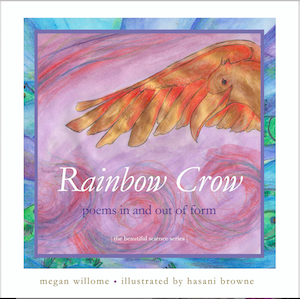How to Write a Clerihew or Two
The clerihew poem was not a form we covered in elementary school. I learned about it through my friend who wrote a series of thirty form poems, each set on a single subject. But I probably shouldn’t teach you how to write a clerihew. It’s not very nice.
The clerihew was invented by Edmund Clerihew Bentley when he was in the English equivalent of high school, so you know he was up to no good. He introduced it to his poet friends, like W.H. Auden and G.K. Chesterton, who also wrote in the form. Bentley published several collections of clerihew, including Baseless Biography, which basically tells you what the form is. If you’re familiar with a limerick, a clerihew is similar. It has rhyme and attitude. It’s meant to be funny.
For all you fans of the American Revolution, here’s a clerihew Bentley wrote mocking King George III.
George the Third
Ought never to have occurred.
One can only wonder
At so grotesque a blunder
—Edmund Clerihew Bentley
A clerihew is four lines composed of two couplets.
Line 1: ends with rhyme A and includes a name
Line 2: ends with rhyme A
Line 3: ends with rhyme B
Line 4: ends with rhyme B
The first line of the poem should name the person or thing being teased. In the case of my poem “Ginger,” it’s a crow named Corbie (Scottish for crow).
Clerihew is a good fit for Crow, who is always doing things that make us chuckle, like stealing a golf ball just after a person hits a hole in one.
Ginger
A crow well-known as Corbie
Landed on a sleeping blondie
I hear he dotes on hair that’s red—
I’d better put a hat upon my head!
—Megan Willome
The scientific detail that crows prefer to bother redheads (as well as people who don’t have any hair at all) comes from In the Company of Crows and Ravens. My hair is gray, but I think I’ll wear a hat when I go outside, just in case.
Perhaps you’re writing about a subject which is not inherently funny, like love. Don’t let that stop you! What is a funny thing a person in love might do? How silly does Cupid look with those heart-tipped arrows? Perhaps now’s your chance to write a truly terrible love poem, the kind that makes your reader smile.
Your Turn
Think of a person you want to gently tease. (Don’t be too mean.) Either name them or give them a nickname. To help you rhyme, try using a rhyming dictionary.
Photo by Tambako the Jaguar, Creative Commons, via Flickr. Post by Megan Willome.
Browse more children’s poetry
“Megan Willome has captured the essence of crow in this delightful children’s collection. Not only do the poems introduce the reader to the unusual habits and nature of this bird, but also different forms of poetry as well.”
—Michelle Ortega, poet and children’s speech pathologist
- Perspective: The Two, The Only: Calvin and Hobbes - December 16, 2022
- Children’s Book Club: A Very Haunted Christmas - December 9, 2022
- By Heart: ‘The night is darkening round me’ by Emily Brontë - December 2, 2022



Sandra Fox Murphy says
My big fat housecat is titled Leo,
the lion he thinks he is, impresario.
He stares down the feral kitties at the door
that beg sweetly for breakfast and rapport.
Megan Willome says
Sandra! You made a clerihew! I am sure Leo is the envy of every kitty in the neighborhood.